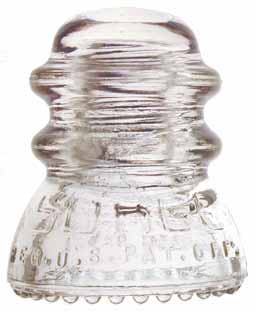First off, sorry folks for not posting lately. My computer is on the fritz. I'm using an old laptop today that seems to be chugging too, so who knows how long it'll hold up. If it dies, I'll go to the next in line. I have a virtual graveyard of machinery that stretches way across my office. The genius who will fix all my problems isn't due here until Wednesday, so until then I guess I'll cross my fingers, say a little Holy Roller prayer, and keep typing.
I got into a conversation yesterday with an old friend. We started discussing western novels and how they've changed over the years.This friend bought Louis L'Amour books when Louis was still writing them. He said he didn't like the new westerns because they didn't spend the time describing the western landscape like the old ones did. I said that authors now don't need to spend endless pages on description because we already know what the west looks like. He said not having all that "beautiful descriptive prose" took the joy out of reading a western. I got to thinking about that, and although I've had this very same discussion with a western author who virtually said the same thing, that those long passages of description aren't necessary anymore...I'm beginning to wonder if my friend isn't right, and by leaving some of it out, we are maybe watering down the western. I've read a lot of western novels in my day, and I guess I honestly haven't paid all that much attention to how the descriptions in the new ones differ from the old ones. I know the language is different, and sometimes the narrative in any book written before the 60's or 70's is a hard knot of words to follow, but the actual description is something I hadn't thought of. Let me know what you think. And I've listed a few books below that Western Writers of America put on their list for best all time western novels.
 All the Pretty Horses
All the Pretty Horses
by Cormac McCarthy
John Grady Cole, a 16-year-old dispossessed Texan, crosses the Rio Grande into Mexico in 1949, accompanied by his pal Lacey Rawlins. The two precocious horsemen pick up a sidekick--a laughable but deadly marksman named Jimmy Blevins--encounter various adventures on their way south and finally arrive at a paradisiacal hacienda where Cole falls into an ill-fated romance.
 Call of the Wild
Call of the Wild
by Jack London
Kidnapped form his safe California home. Thrown into a life-and-death struggle on the frozen Artic wilderness. Half St. Bernard, half shepard, Buck learns many hard lessons as a sled dog: the lesson of the leash, of the cold, of near-starvation and cruelty. And the greatest lesson he learns from his last owner, John Thornton: the power of love and loyalty.Yet always, even at the side of the human he loves, Buck feels the pull in his bones, an urge to answer his wolf ancestors as they howl to him.
 Centennial
Centennial
by James A. Michener
A stunning panorama of the West, CENTENNIAL is an enthralling celebration of our country, brimming with the glory and the greatness of the American past that only bestselling author James Michener could bring to stunning life. From the Native Americans, the migrating white men and women, the cowboys, and the foreigners, it is a story of trappers, traders, homesteaders, gold seekers, ranchers, and hunters--all caught up in the dramatic events and violent conflicts that shaped the destiny of our legendary West.
 Death Comes for the Archbishop
Death Comes for the Archbishop
by Willa Cather
Death Comes for the Archbishop traces the friendship and adventures of Bishop Jean Latour and vicar Father Joseph Vaillant as they organize the new Roman Catholic diocese of New Mexico. Latour is patrician, intellectual, introverted; Vaillant, practical, outgoing, sanguine. Friends since their childhood in France, the clerics triumph over corrupt Spanish priests, natural adversity, and the indifference of the Hopi and Navajo to establish their church and build a cathedral in the wilderness. The novel, essentially a study of character, explores Latour's inner conflicts and his relationship with the land, which through the author's powerful description becomes an imposing character in its own right.
 Hondo
Hondo
by Louis L'Amour
He was a man etched by the desert's howling winds, a big, broad-shouldered man who knew the ways of the Apache and ways of staying alive. She was a woman raising a young son on her own on a remote Arizona ranch. And between Hondo Lane and Angie Lowe was the warrior Vittoro, whose people were preparing to rise against the white men. Now the pioneer woman, the gunman, and the Apache warrior are caught in a drama of love, war, and honor.
 Lonesome Dove
Lonesome Dove
by Larry McMurtry
Set in the late nineteenth century, Lonesome Dove is the story of a cattle drive from Texas to Montana -- and much more. It is a drive that represents for everybody involved not only a daring, even a foolhardy, adventure, but a part of the American Dream -- the attempt to carve out of the last remaining wilderness a new life.
 Monte Walsh
Monte Walsh
by Jack Schaefer
With humor and pathos author Schaefer chronicles the passing of the Old West. In loosely connected episodes he vividly portrays the life and times of working cowboy Walsh, side-kick Chet Rollins, and other memorable characters of the Slash Y. Here are shootings, cattle drives, winter storms, and spring floods; cattle rustling, romancin’ and horse breaking. Man and beast, pushed to the limits of their endurance, survive or perish.














































